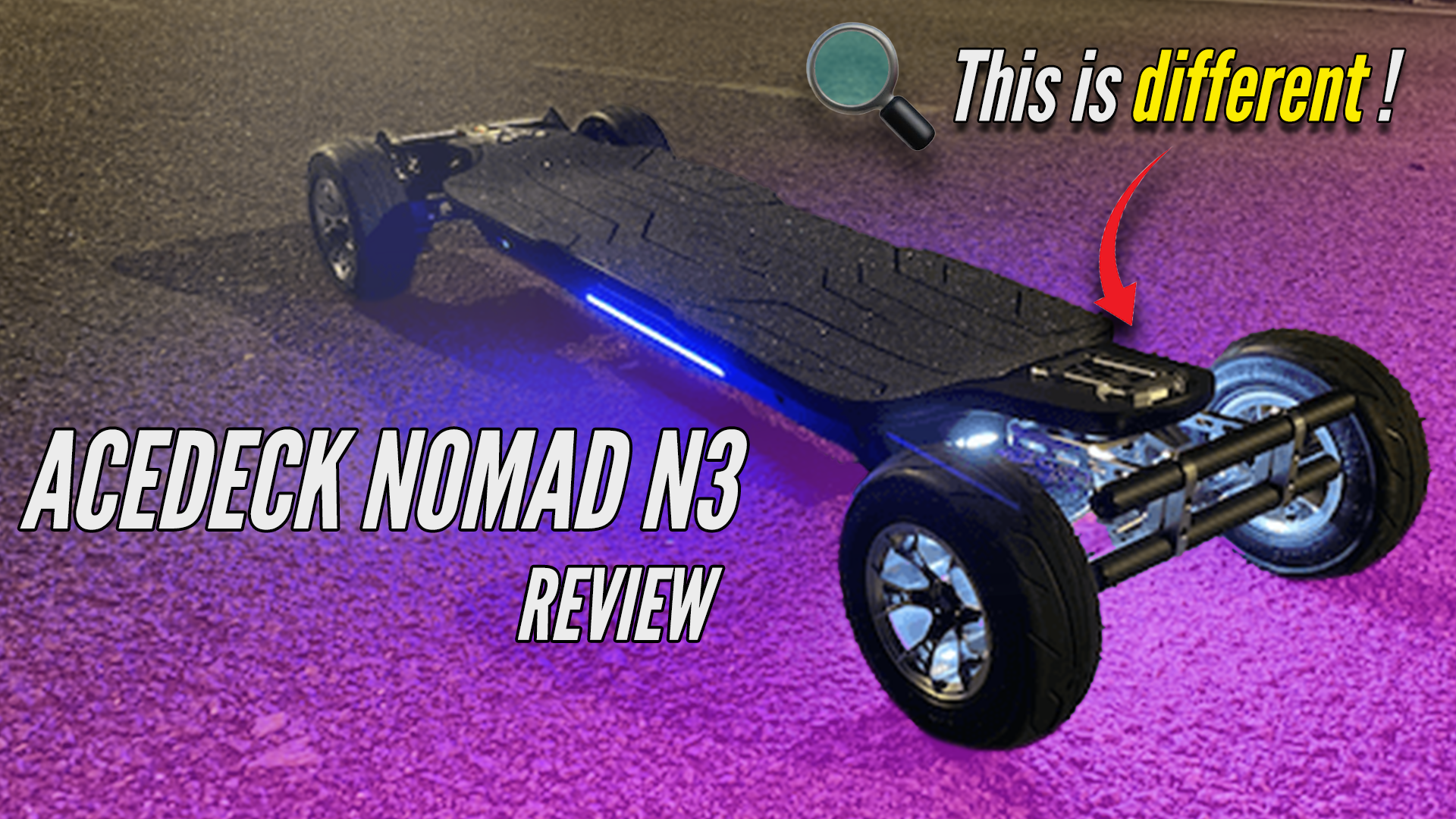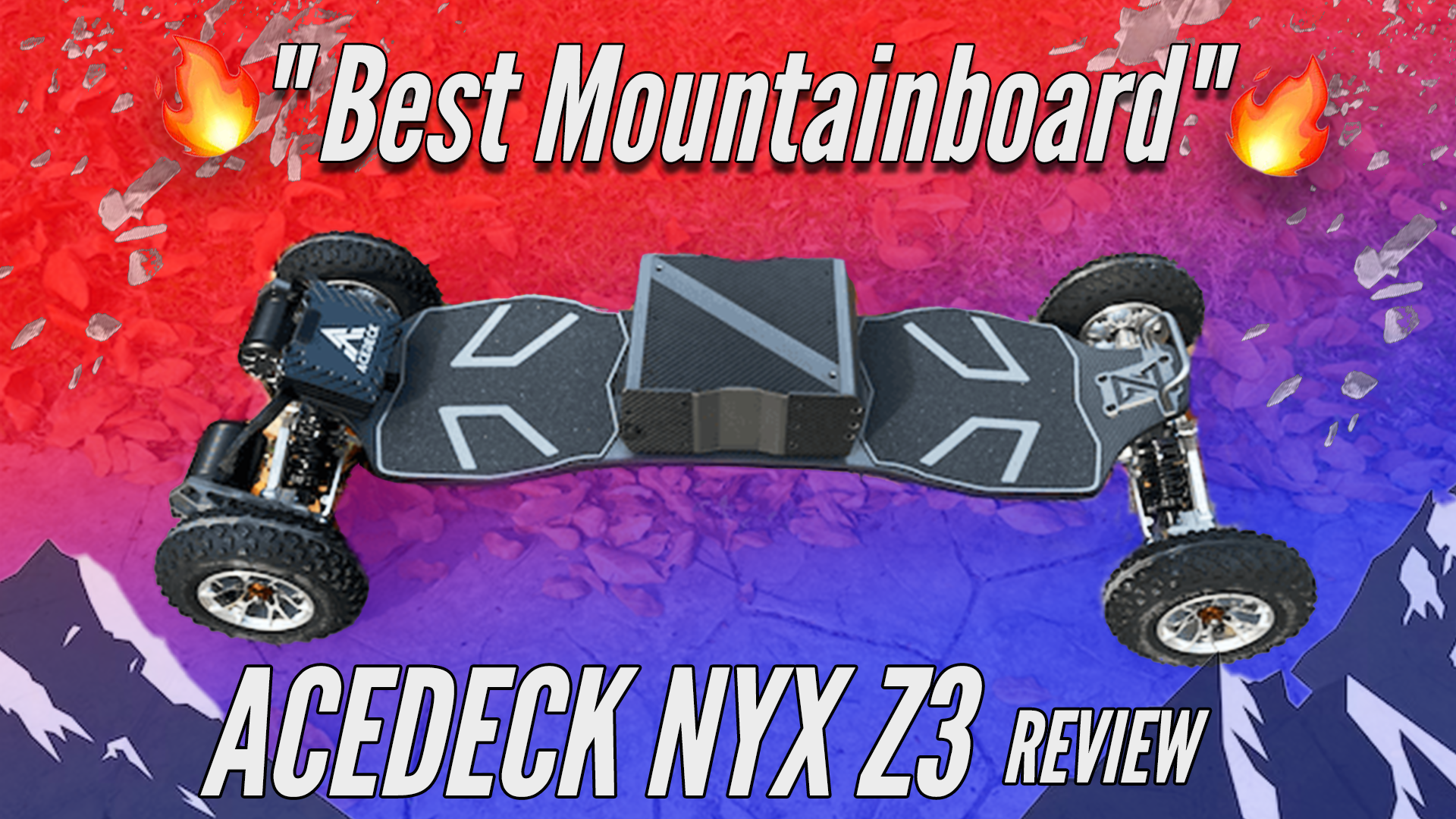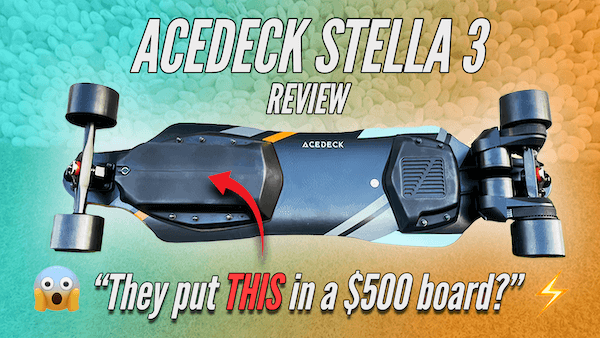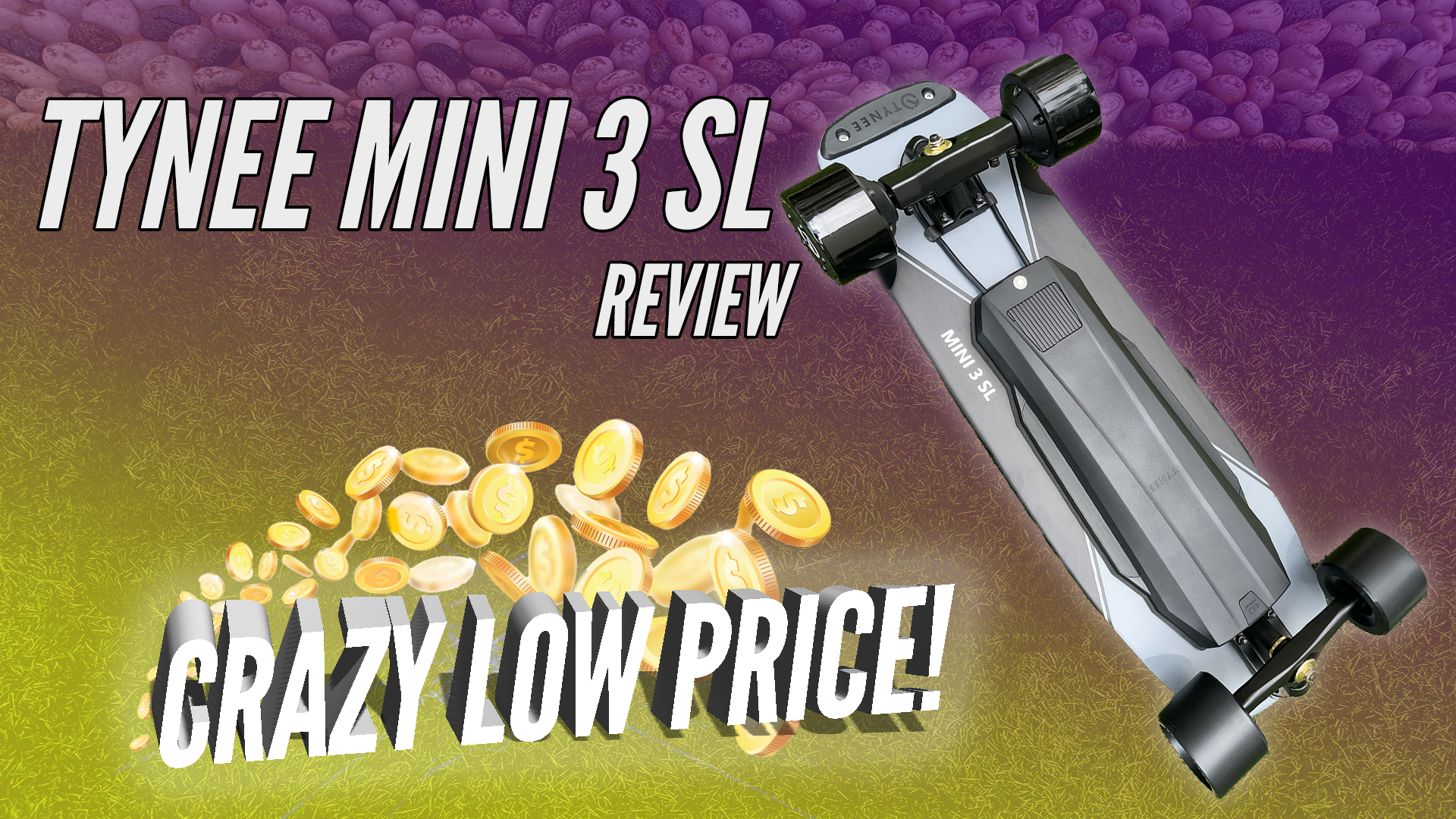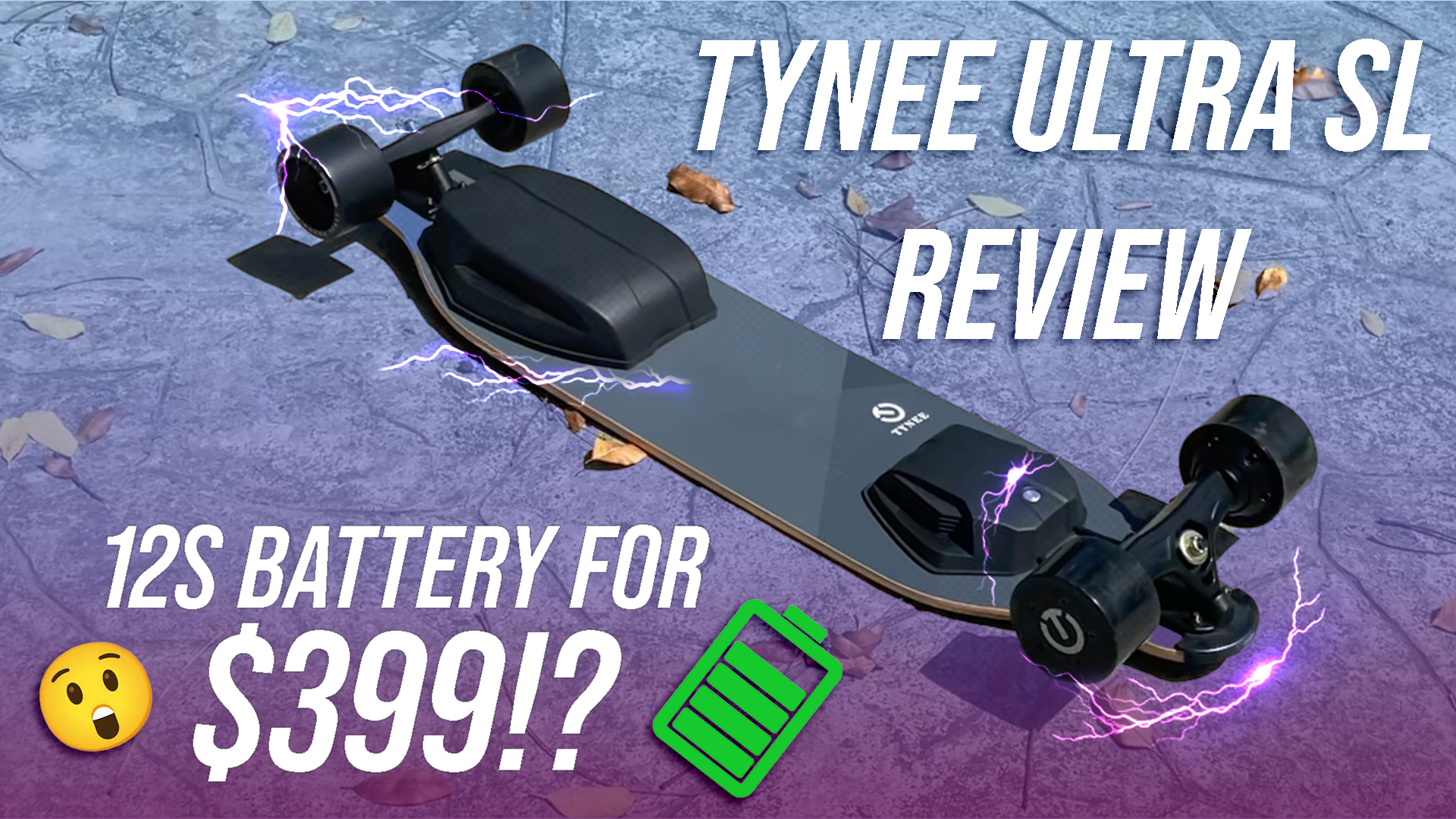Acedeck has released a new board called the Nomad N3. The standard Nomad N3 is available for $1899, while an elite model with a larger battery costs $2199.
Compared to Acedeck’s own Nyx series, the Nomad series seems to receive less attention. My guess is that this is the case since the Nomad initially appears to be simply another AT board in an extremely competitive market.
However, this couldn’t be further from the truth. When we took a closer look, we realized the Nomad N3 is probably the most unique AT board in the market right now.


Acedeck Nomad N3 Specs:
| Price | $1899 – $2199 |
| Battery | 1554Wh 14s6p Samsung1304Wh 14s6p Molicel P42A |
| Controller | Custom Acedeck ESC |
| Top Speed | 37 Mph (60 Kph) |
| Range | 55 Miles (90 km)43 Miles (70 km) |
| Deck | Multi-layer composite deck |
| Motor | 6890 150KV 7500W*2 for N3 Elite6384 150KV 4500W*2 for standard N3 |
| Net Weight | 44.3lbs (20.1kg) |
Deck – Multi Layer Composite Deck:



Starting with the deck, Nomad is the only production eskate we know of with a split-angle deck. We just love to have something different than a typical double-drop deck, which everybody else is going with right now. With the split-angle deck, the front of the deck angles upwards to increase steering ability, and the back of the deck curves downwards to increase stability. We’re curious as to why there aren’t more boards on the market that use split-angle decks because people seem to really love the Nomad N1’s deck.
The deck material is a multi-layer composite of carbon fiber, maple, fiberglass, and bamboo.

Compared to the previous Nomad N1, the deck is somewhat wider on the N3. It also has a nice W concave on it, and we were told that it is less pronounced than the previous N1 to make it more comfortable to stand on.
The deck is pretty stiff, as stiff as a typical carbon fiber deck. It uses foam-layered grip tape that gives it a more serious and purposeful look. Acedeck also included the N1 version of grip tape in the box, in case that suits your taste better. There are also accent lights on the front and side of the deck, which can be turned on and off using the remote.
ESC and Remote – Custom Acedeck ESC:


As for the ESC, the Nomad N3 is paired with a 14s custom ESC, which, if we have to guess, was based on the tried and true Hobbywing ESC. It comes with four-speed settings and a smart turn-on feature. It’s paired with an Acedeck customized remote with a screen for telemetry where the board power, top, speed, acceleration curve, braking, and even the lights under the deck can be customized through the remote menu.
Battery – 1304Wh or 1554Wh 14s6p battery:


Moving on to the battery, you can choose between the standard version, which is powered by a 1304Wh 14s6p Molicel P42A, or the Elite version, which is powered by a 1554Wh 14s6p Samsung battery, which is almost twice the battery capacity of the Nomad N1. The standard version is marketed to have a range of up to 43 miles (70 km), and the Elite version its marketed range is up to 55 miles (90 km).
It took us a long while to complete the range test, and we got 41 miles (66km) riding fast.
Motor – 150kV Gear Drive System:



Powering this Nomad N3 is a gear drive system similar to the one on the Nyx Z3 with a gear ratio of 1:4. From our experience with the Nyx Z3, we already know that they are both powerful and have amazing torque. They are also regularly quiet compared to other gear drive systems on the market which isn’t something you see every day.
It is also worth mentioning that this new gear drive system is about 30% more compact, which translates to higher ground clearance, especially when compared to some belt drives.
We prefer gear drive systems over belt drive systems, as there’s no need for belt maintenance. Also, since this drive system is completely enclosed, it is protected from dust and debris, which makes for hassle-free off-road riding.
Gear drives are also more efficient in terms of power delivery, so they tend to get more mileage out of the battery.
The Nomad N3 is marketed to have a top speed of 37mph+ (60kph+), which is higher than boards like the Propel Endeavors2 Pro or the Meepo Vader. In our top speed test, we managed to hit 34 mph (55 kph), but some other reviewers had gotten 36mph (58 kph) and you can increase the top speed further by upgrading to 8-inch tires.
Trucks and Wheels – Precision True Kingpin Trucks and 8” AT Wheels:



Next, for the trucks, the Nomad N3 uses precision TKP trucks, which are marketed to have the turning radius of a Double King Pin truck combined with the Traditional Kinpin truck’s stability. They also redesigned the bridge angles and hanger, which are CNC machined and the axles are still 10mm, for improved durability.
We also like the bullbar protection system, which gives the board a distinct, almost military look. You can use it to ram into others during battle, and during peacetime, it doubles as a handle for you to pull this hefty board around.
The Nomad N3 comes pre-installed with 92A bushings, which are pretty soft. If the truck feels too soft for you, you can always swap it for the stiffer 98A bushings. Acedeck also includes thicker bushing cups, which can give you an even stiffer setup.
It’s also good to note that the wheel hubs are also CNC machined, much unlike regular plastic hubs you’d see on the market.
There is also an 1100-lumens integrated light system in the works
Specs Summary of the Nomad N3:



Acedeck has always produced beautiful boards, and this one exudes luxury.
What is surprising for us is that if you look around the market, $1899 usually gets you a board with a 14s4p battery or less. So, despite presumably spending a good amount of money on R&D and using exclusively high-quality parts, the Nomad N3 still manages to outbid rivals on pricing.
Riding Experience Nomad N3:


One of the first things we notice when riding the Nomad N3 is how nimble it is, which is surprising for such a heavy board. The split deck system, plus this new TKP truck, is a big game changer. It’s really responsive and easy to turn, might even be a bit too loose right out of the box. We tightened it up a little to make it just right for us.
With this split deck system, the front truck is responsive and has the turning radius of double kingpin trucks, yet it feels more stable than your average double kingpin truck.
The carving was really fun on the Nomad N3, too, which is no small feat for a 44.3 lbs board with AT wheels. A lot more fun than other big AT boards for sure.


And it didn’t compromise stability either. Having a split-angled deck also means the back trucks of the boards are stable and, hence, won’t give you speed wobble. We feel very comfortable going top speed with it. The W-concave also makes our feet feel secure.
The Nomad N3 has the same motors and likely the same ESC as the Nyx Z3, and the speed control, torque, and power are very similar. The torque on the Nomad N3 is super strong, and you will feel the high-voltage system in action. The acceleration is quick and punchy and can effortlessly get you to the top speed. Acedeck did a beautiful job configuring the speed control, and even though the acceleration is rapid and strong, it wasn’t harsh and didn’t have the jolt that many boards with LingYi ESC might have. The braking is equally smooth but strong, and those who like strong brakes would definitely be happy about this.
Another thing about the Nomad N3 is that despite having a rigid deck, the large all-terrain wheels and foam grip tape helped to reduce most, if not all, of the vibrations from the road.
Verdict – Acedeck Nomad N3:



To us, the Acedeck Nomad N3 is like a Sport SUV. It is mainly for urban commuting or even racing, but it can certainly handle some off-road riding. The thing we love most about it is definitely how nimble it is, making it possible to ride on sidewalks or amongst foot traffic.
You can hardly find another board that has this blend of power, comfort, stability, and responsiveness, just like you can hardly find a board this well built, well specced for only $1899.
Our only regret here is that we already made a list of the Best Electric Skateboard of the Year, and it’s too late to put this one in.
If you are interested in buying the Acedeck, be sure to check out our affiliate discount link here and use code: “ESKATEHQ” to receive $5 off during checkout.
It will help you get a small monetary discount and help us out too. On top of that, you’ll be tagged as an Electric Skateboard HQ customer and probably be treated better. Cheers!




